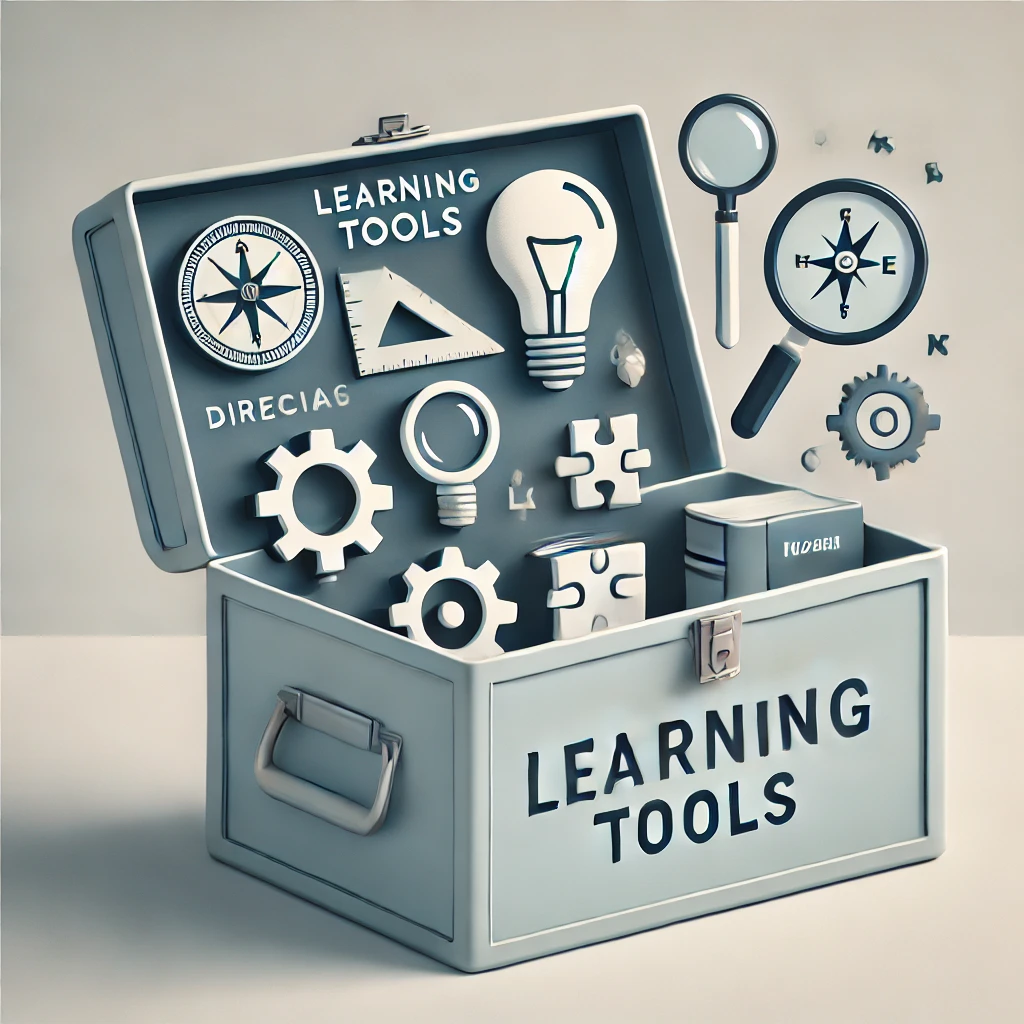The Missing Piece in Education
Let’s be honest: most of us were never actually taught how to learn. We were just thrown into the deep end – sink or swim, memorise or panic, cram or cry. As a former teacher, I’ve seen this madness from all angles. We teach students math, history, and science… but how to learn? That part gets mysteriously skipped, as if everyone is just supposed to figure it out through trial, error – and later in life through late-night caffeine.
And for students who don’t fit the mold—neurodiverse learners, curious rebels, quiet thinkers—the system doesn’t just forget them, it labels them. Not because they can’t learn, but because the system never showed them how. That’s the gap. And it’s way past time we fix it.
Learning Strategies: The Key to Retention and Success
For neurodiverse learners—students with ADHD, dyslexia, or other cognitive differences—this gap is even more profound. Traditional education often treats them as if they are the problem, when in fact, the problem is the rigid, outdated system that fails to support them. The Economist recently published a groundbreaking article arguing that ADHD should not be treated as a disorder, but rather as a different way of thinking that requires adaptive teaching methods (1).
The real question isn’t whether students can learn. It’s whether we are giving them the right tools to do so.

How different would your school years have been if someone had actually taught you how to learn? Let’s make sure today’s learners don’t have to figure it out the hard way.
The Power of Learning Strategies
How Tailored Learning Approaches Benefit Every Learner
Neurodiverse students often face silent struggles in classrooms. It’s not about intelligence—it never has been. It’s about fit. A system designed for one type of learner will inevitably fail those who don’t match the mold. Many teachers lack the training to help these students, not because they don’t care, but because they themselves were never taught how learning actually works (2).
Why One-Size-Fits-All Education Fails Students
Imagine a student with ADHD struggling to focus in a lecture-heavy classroom. The system labels them as inattentive, yet research shows they may thrive in highly interactive, movement-based learning environments. A student with dyslexia may struggle with dense textbooks, but when given audio-based resources, their comprehension soars. The issue is not the learner—it’s the lack of adaptability in education.
This is where enduri is making a difference. Instead of forcing students to conform to an outdated system, enduri adapts to them. It offers individualized learning strategies, allowing students to find techniques that actually work for them. The result? More confidence, better retention, and learning that feels natural rather than forced.
Why Schools Don’t Teach Learning Strategies
The Education System’s Obsession with Content Over Process
If learning strategies are so essential, why aren’t they a core part of education? The answer lies in how schools are structured. The traditional model focuses on delivering content, not on helping students master the learning process. The assumption has always been that students will develop their own methods naturally, yet research consistently proves otherwise (3).
Why Teachers Are Rarely Trained in Learning Techniques
Teachers are also caught in this cycle. Most teacher training programs barely touch on learning science. The focus is on teaching subjects, not on helping students understand how to absorb and retain information. This gap leaves countless students struggling—not because they lack ability, but because no one ever showed them how to optimize their learning experience.
This is exactly why enduri exists. It provides students with practical, research-backed strategies that help them take control of their education. Instead of leaving learning success to chance, it equips students with tools that set them up for long-term achievement.
Learning to Learn: The Secret to Lifelong Success
Why Learning Techniques Matter Beyond the Classroom
The ability to learn efficiently isn’t just an academic skill—it’s a life skill. A student who masters learning strategies doesn’t just improve their grades; they gain an advantage that carries through university, career, and beyond. Studies confirm that teaching metacognition—thinking about thinking—boosts student progress (4).
Learning Strategies help students tobecome lifelong learners
Beyond school, learning never stops. Whether picking up a new language, adapting to new job roles, or navigating complex problems, those who understand how they learn best have a massive advantage. This is why enduri is not just a study tool—it’s a mindset shift. It doesn’t just help students pass tests; it helps them become lifelong learners who can tackle new challenges with confidence.
How enduri is Changing the Learning Game
A Strength-Based Approach to Individualized Learning
Most learning platforms focus on delivering content, but enduri does something different—it empowers students to take control of their learning process. Instead of forcing every student into the same method, it allows self-paced exploration, guiding learners to discover and refine their personal learning strategies.
Why Motivation and Engagement Are Key to Progress
By integrating motivation boosters, rewards, and personal avatars, enduri keeps students engaged. It understands that learning is tough work, but it should also be rewarding and enjoyable. Neurodiverse learners, who often struggle with traditional methods, find that enduri offers the flexibility and support they need to thrive.
Learning should be progress-driven, not punishment-driven. enduri replaces shame with curiosity, failure with exploration, and repetition with strategic growth.
Conclusion: It’s Time to Rethink Education
Shifting from “What We Teach” to “How They Learn”
For too long, education has focused on what students need to learn, without considering how students actually learn. It’s time for a shift—from expecting students to passively absorb knowledge to giving them the tools to actively shape their own learning process.
We have spent years debating what to teach, but we’ve barely stopped to ask how students actually learn. That’s the paradigm shift we need. Instead of designing education around curriculum requirements, we should be designing it around how the brain best acquires, retains, and applies knowledge.
This is what enduri is pioneering. It’s not just another learning platform; it’s a movement toward empowering students with the skills they need to take control of their education. Because when students learn how to learn, they unlock a level of independence, confidence, and success that goes far beyond the classroom.
Join the Learning Revolution with enduri
How different would your school years have been if someone had actually taught you how to learn? Let’s make sure today’s learners don’t have to figure it out the hard way. Give enduri a try and join today at www.enduri.org.
Sources
- The Economist – “ADHD should not be treated as a disorder” (Oct 30, 2024)
- Neurodiversity and Education – Supporting Neurodivergent Learners
- Education Endowment Foundation (EEF) – Metacognition and Self-Regulated LearningEEF
- RAND Corporation – The Impact of Personalized Learning on Student Achievement
- Education Week – Why Most Teachers Don’t Feel Prepared to Teach Students with Learning Differences

